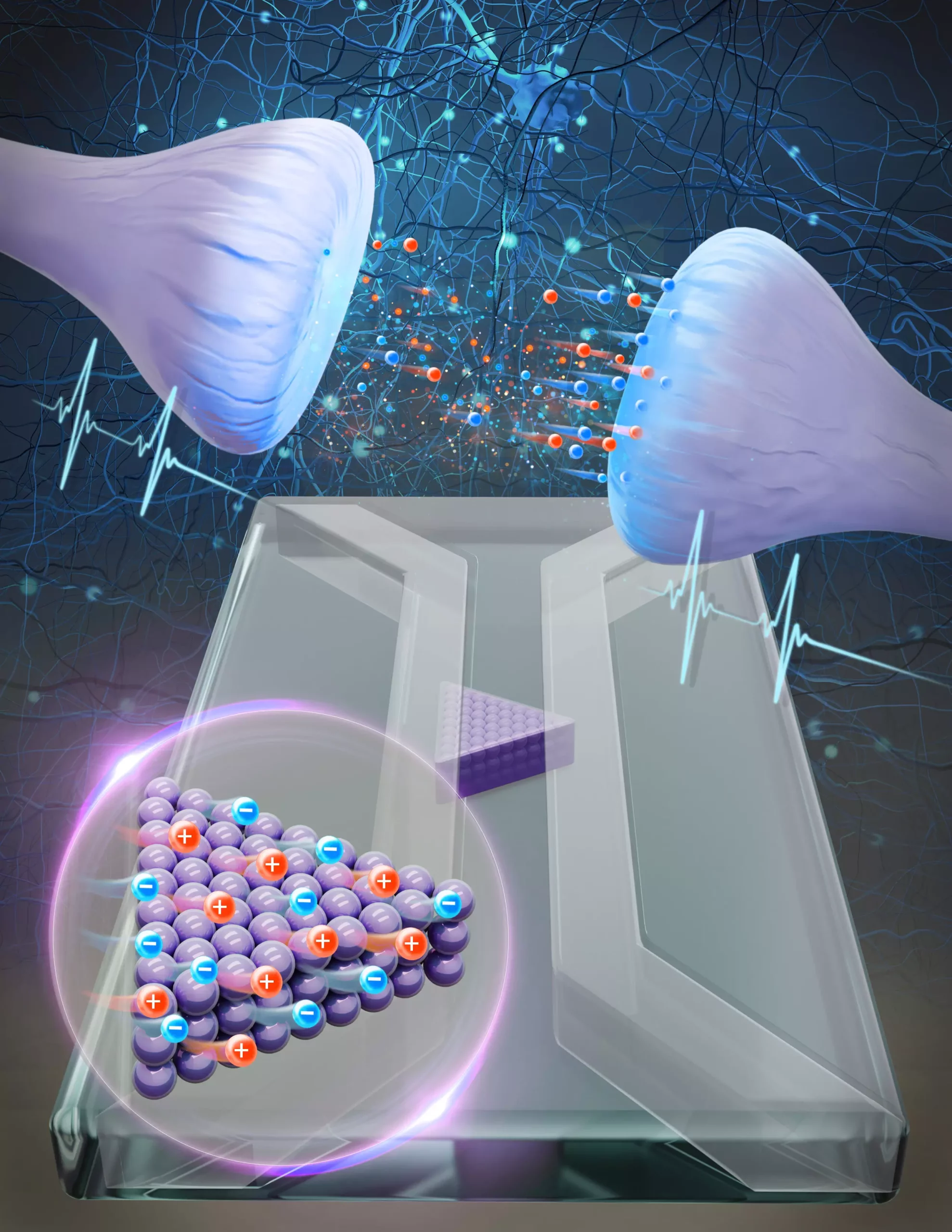The field of iontronic neuromorphic computing is rapidly evolving, with theoretical physicists at Utrecht University and experimental physicists at Sogang University achieving a groundbreaking milestone by constructing an artificial synapse using water and salt. This innovative approach holds promise for processing complex information using a medium similar to that of the human brain.
In a recent study published in Proceedings of the National Academy of Sciences, researchers unveiled a device mimicking the behavior of a synapse, a critical element in transmitting signals between neurons. Unlike traditional brain-inspired computers that rely on solid materials, this device called an iontronic memristor features a cone-shaped microchannel filled with a water and salt solution. When subjected to electrical impulses, ions in the liquid migrate through the channel, altering ion concentration and adjusting conductivity. This dynamic process reflects the strengthening or weakening of neuronal connections, offering a glimpse into how our brains process information.
Lead author Tim Kamsma, a Ph.D. candidate at Utrecht University, conceptualized the idea of utilizing artificial ion channels for cognitive tasks, leading to the development of a robust theoretical model. Collaborating with researchers in South Korea, Kamsma’s theoretical framework was swiftly translated into experimental work, culminating in the successful demonstration of the device’s capabilities. The alignment between theoretical predictions and experimental outcomes underscores the potential of iontronic neuromorphic computing in revolutionizing conventional computer systems.
Despite being in its nascent stages, iontronic neuromorphic computing holds significant promise in enhancing computational efficiency and reducing energy consumption. The ability to replicate neural communication patterns using the same medium as the brain represents a substantial leap forward in the quest for brain-inspired computing. While the realization of this vision remains speculative, the publication of this groundbreaking research marks a pivotal advancement toward creating computers that emulate the intricacies of the human brain.
The development of an artificial synapse utilizing water and salt as the primary medium showcases the potential of iontronic neuromorphic computing in revolutionizing the field of cognitive computing. By mirroring the synaptic mechanisms observed in the brain, researchers are inching closer toward creating computer systems that operate more efficiently and effectively. As further research progresses and technology advances, the future of iontronic neuromorphic computing appears promising, offering new horizons for innovation and technological advancement.


Leave a Reply